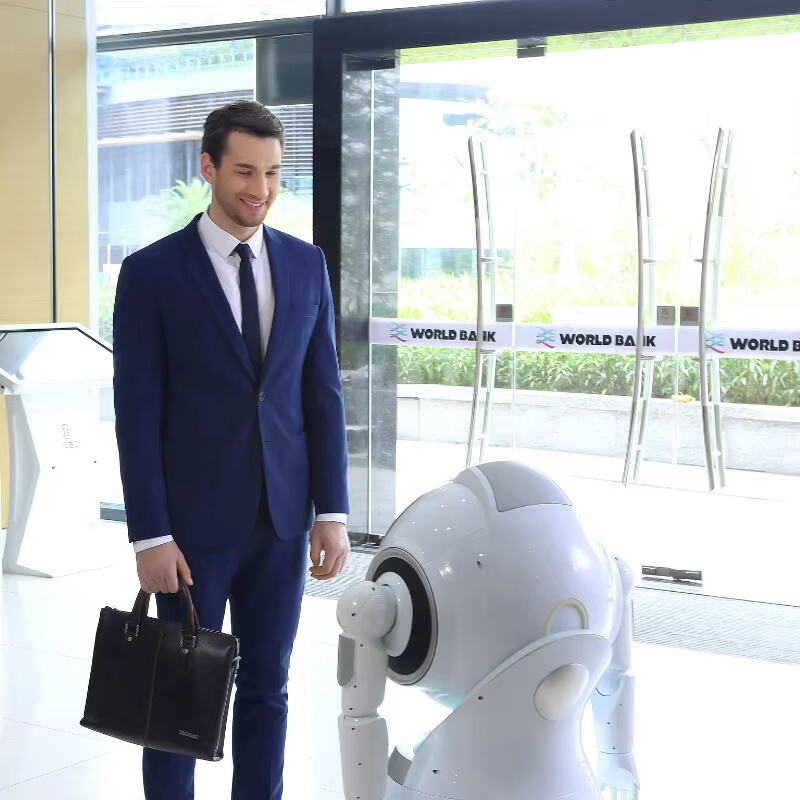The Evolution of Automated Security Through Facial Recognition
In today's rapidly advancing technological landscape, face recognition bots have emerged as a cornerstone of modern security infrastructure. These sophisticated systems combine artificial intelligence with advanced optical technology to create an unprecedented level of access control and security management. As organizations worldwide seek more reliable, efficient, and user-friendly security solutions, face recognition bots are revolutionizing how we approach both physical and digital security protocols.
The integration of face recognition bots into security systems represents a significant leap forward from traditional methods such as key cards, PIN codes, or conventional biometric systems. These intelligent systems can process and authenticate individuals in mere seconds, dramatically reducing wait times while maintaining exceptional accuracy rates. The technology has evolved to such an extent that it can now detect subtle differences between identical twins and even adapt to changes in an individual's appearance over time.
Core Components of Face Recognition Security Systems
Advanced Neural Networks and AI Processing
At the heart of face recognition bots lies sophisticated artificial intelligence powered by deep learning neural networks. These systems are trained on vast databases of facial images, learning to identify and distinguish unique facial features with remarkable precision. The AI components continuously improve their accuracy through machine learning, adapting to new scenarios and environmental conditions while maintaining robust security protocols.
Modern face recognition bots employ multiple layers of AI processing to analyze various facial characteristics simultaneously. From measuring the distance between eyes to mapping facial contours, these systems create detailed mathematical representations of each face, known as facial signatures. These signatures are then encrypted and stored securely, forming the basis for future authentication processes.
High-Resolution Imaging and 3D Mapping
The quality of facial recognition largely depends on the imaging technology employed. Today's face recognition bots utilize high-resolution cameras combined with 3D mapping capabilities to create detailed facial profiles. This multi-dimensional approach significantly reduces the possibility of spoofing attempts using photographs or masks, as the system can detect depth and texture information that flat images cannot replicate.
Infrared and thermal imaging capabilities further enhance security by ensuring the system can function effectively in various lighting conditions and verify that it's interacting with a living person rather than an artificial representation. This sophisticated imaging technology works in conjunction with AI processing to deliver highly accurate authentication results.

Implementation Strategies for Maximum Security
Multi-Factor Authentication Integration
While face recognition bots provide robust security on their own, many organizations opt to implement them as part of a multi-factor authentication strategy. By combining facial recognition with other security measures such as mobile device verification or fingerprint scanning, security teams can create virtually impenetrable access control systems. This layered approach ensures that even if one security measure is compromised, overall system integrity remains intact.
The integration process requires careful planning to maintain both security and user convenience. Face recognition bots can be programmed to adjust authentication requirements based on security clearance levels, time of day, or specific location requirements. This flexible approach allows organizations to maintain stringent security where needed while facilitating smooth access in lower-risk areas.
Scalable Deployment and System Management
Successful implementation of face recognition bots depends heavily on proper deployment strategies and ongoing system management. Organizations must consider factors such as camera placement, lighting conditions, and network infrastructure to ensure optimal performance. The system should be scalable to accommodate growing user databases and increasing security demands without compromising speed or accuracy.
Regular system updates and maintenance are crucial for keeping face recognition bots operating at peak efficiency. This includes updating AI algorithms, expanding facial databases, and fine-tuning recognition parameters based on real-world performance data. A well-maintained system can adapt to changing security needs while maintaining high accuracy rates and user satisfaction.
Privacy and Compliance Considerations
Data Protection and Storage Protocols
Face recognition bots must operate within strict privacy guidelines and regulatory frameworks. Organizations implementing these systems need robust data protection protocols to safeguard biometric information and personal data. This includes encrypted storage solutions, secure transmission methods, and clear policies regarding data retention and deletion.
Compliance with international privacy regulations such as GDPR and CCPA requires careful attention to data handling practices. Organizations must maintain transparent communications with users about how their biometric data is collected, stored, and used. Regular privacy impact assessments help ensure ongoing compliance and identify potential areas for improvement in data protection measures.
Ethical Implementation Guidelines
The deployment of face recognition bots raises important ethical considerations that organizations must address. This includes ensuring fair and unbiased recognition across different demographic groups, obtaining proper consent for data collection, and establishing clear boundaries for system use. Regular audits of system performance can help identify and correct any bias in recognition algorithms.
Organizations should develop comprehensive ethical guidelines governing the use of facial recognition technology. These guidelines should address issues such as transparency in system operation, limits on data sharing, and procedures for handling special cases or exemptions. Building trust with users through ethical implementation is crucial for the long-term success of face recognition security systems.
Future Trends and Innovations
Advanced Recognition Capabilities
The future of face recognition bots points toward even more sophisticated capabilities. Emerging technologies such as emotion recognition and behavioral analysis are being integrated into existing systems, providing additional layers of security and user interaction. These advanced features can help identify potential security threats by detecting suspicious behavior patterns or unusual emotional states.
Research and development in AI and machine learning continue to improve the accuracy and reliability of facial recognition systems. New algorithms are being developed that can better handle challenging conditions such as poor lighting, partial face coverage, or rapid movement. These innovations will further enhance the effectiveness of face recognition bots in security applications.
Integration with Emerging Technologies
Face recognition bots are increasingly being integrated with other emerging technologies such as augmented reality and Internet of Things (IoT) devices. This convergence creates new possibilities for security applications, from smart building management to personalized user experiences. The combination of multiple technologies can provide more comprehensive security solutions while improving user convenience.
Mobile integration is another significant trend, with face recognition bots being adapted for use with smartphones and other portable devices. This enables secure remote access control and authentication for a wide range of applications, from building entry to financial transactions.
Frequently Asked Questions
How accurate are face recognition bots in identifying individuals?
Modern face recognition bots achieve accuracy rates exceeding 99% under optimal conditions. The accuracy depends on factors such as lighting, camera quality, and the sophistication of the AI algorithms used. Regular system updates and proper maintenance help maintain high accuracy levels.
What happens if the face recognition system fails to recognize an authorized user?
Face recognition systems typically include backup authentication methods for such situations. These may include alternative biometric verification, PIN codes, or manual override protocols by security personnel. Multiple authentication attempts are usually allowed before triggering security protocols.
How do face recognition bots protect against spoofing attempts?
Advanced face recognition bots employ multiple security measures including 3D mapping, infrared scanning, and liveness detection to prevent spoofing. These technologies can distinguish between real faces and photographs, masks, or video recordings, ensuring only genuine users gain access.

